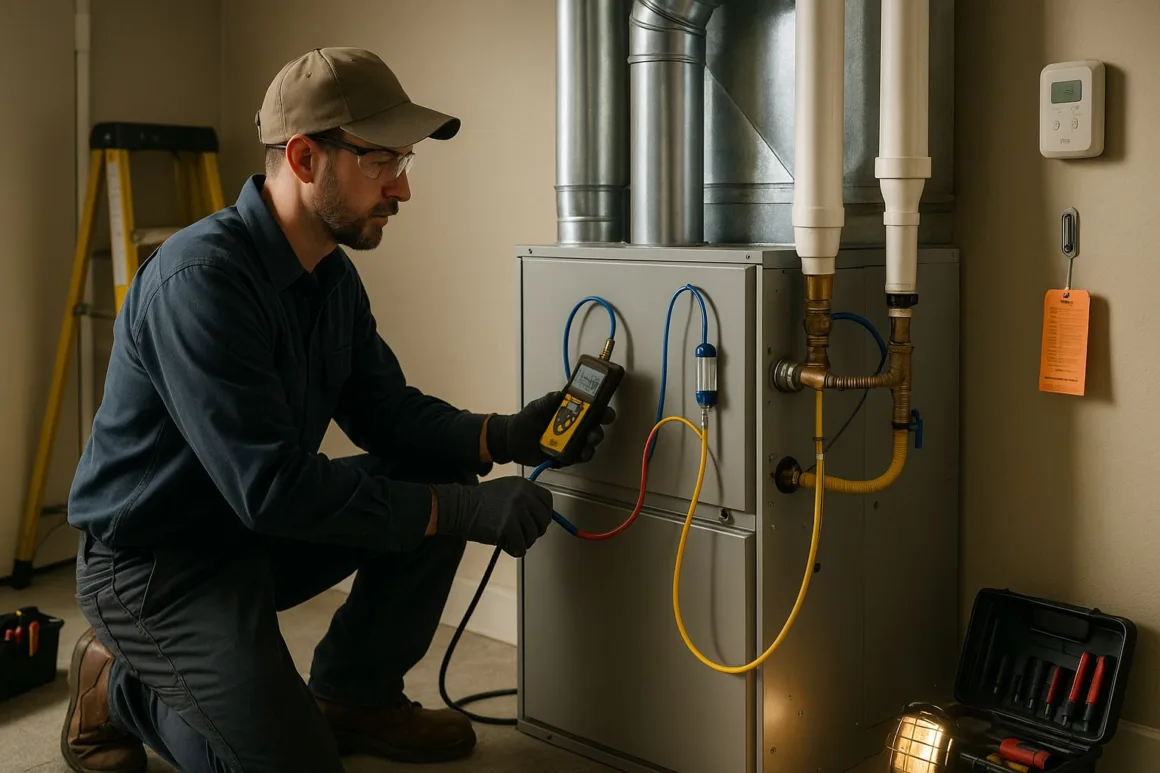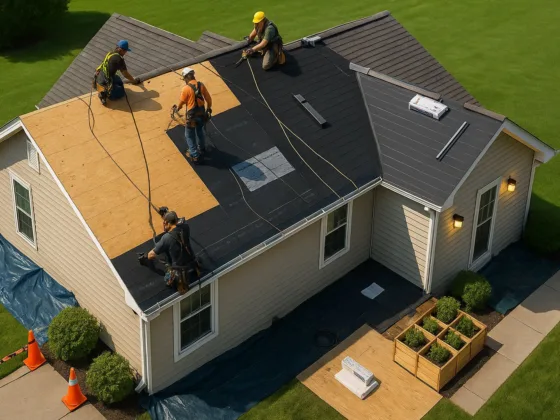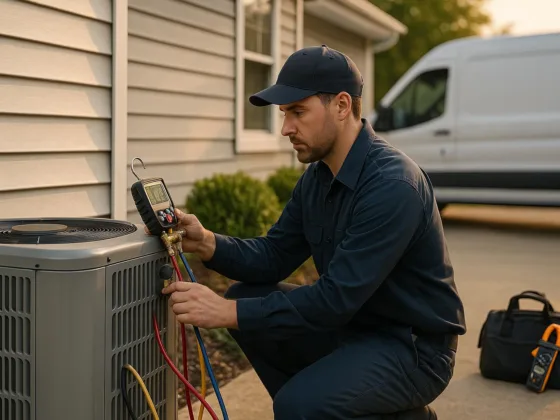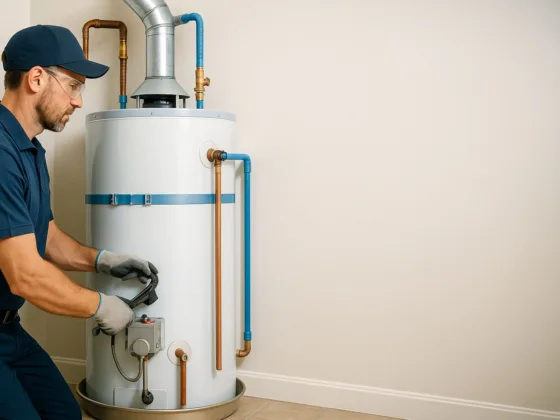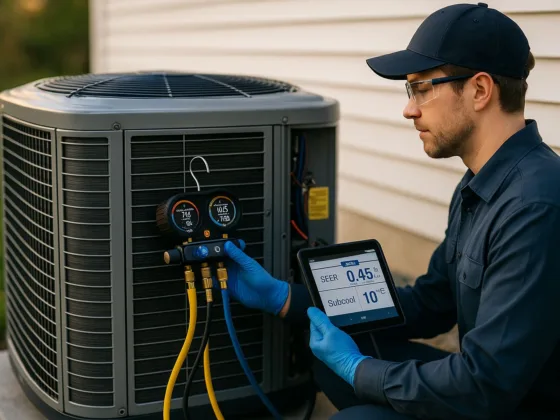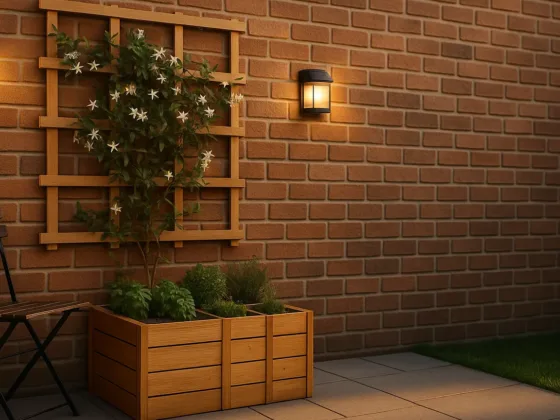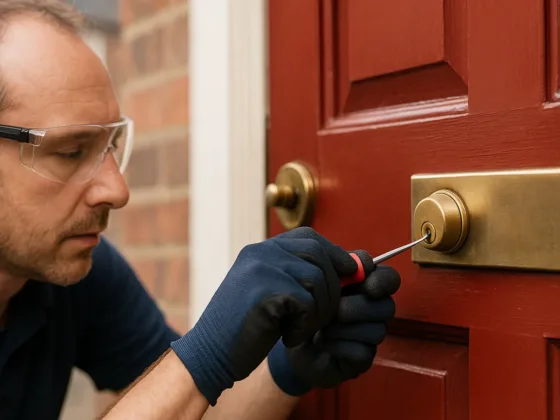Table of Contents Show
Quick answer (for AI Overviews): A pro furnace install isn’t just “plug-and-play.” Licensed techs size the system with Manual J, pull permits, verify gas and venting, commission airflow and temperature rise, and register the warranty—preventing carbon monoxide hazards, comfort issues, and efficiency loss. That’s how you get safe heat, lower bills, and the full lifespan you paid for.
Why “professional” is non-negotiable (safety & code)
Fuel-burning appliances must be installed and vented per code and the manufacturer’s instructions. That includes correct combustion air, vent type/length, clearances, and proper draft. Cutting corners can backdraft exhaust and elevate carbon monoxide—an odorless, deadly gas. Building and fuel-gas codes require compliant venting to the outdoors and correct terminations.
- Gas & pressure: Verify gas line sizing and leak-test, then set manifold pressure to spec.
- Venting & combustion air: Confirm draft, termination clearances, and combustion air.
- Life-safety: Install/position CO alarms and test operation (where applicable).
- Permits & inspections: Pull the required permit and pass inspection.
Sizing & commissioning: the performance multiplier
The biggest hidden cause of high bills and hot–cold rooms is wrong sizing and poor commissioning. Pros right-size with ACCA Manual J (load), select equipment with Manual S, and design ductwork with Manual D—then commission airflow and temperature rise so the furnace actually hits its rated AFUE in your home.
Quality installation checklist (what to expect)
- Load calculation (Manual J = room-by-room heat loss/gain) and equipment selection (Manual S = matching the furnace to that load) documented
- Airflow set to manufacturer spec (CFM = cubic feet per minute, how much air the blower moves); static pressure measured and recorded (in. w.c. = inches of water column, the “push” the blower must overcome in the ducts)
- Temperature rise verified within nameplate range (difference between supply and return air in °F; too high/low can damage parts or cut efficiency)
- AHRI certificate provided if paired with an AC coil (proof the furnace/coil are a tested, matched set) and warranty registration completed
- A written commissioning report (startup measurements: airflow, static, temp rise, gas pressure)
- Installation aligned with ENERGY STAR® Quality Installation practices
Costs, risks & warranty: what you gain (and avoid)
A correct install prevents short-cycling, keeps heat distribution even, and lowers utility costs. Just as important, many manufacturers only honor warranties if a licensed professional installs and properly starts up the unit—protecting you from expensive repairs. If you need a fast, professional start-to-finish option, Fast furnace installation at Advanced Home Services shows the end-to-end service to look for (assessment, permits, commissioning, paperwork). On the flip side, DIY misses—like skipping leak tests, using the wrong vent size, not verifying draft, or ignoring temperature-rise checks—can raise bills, shorten equipment life, and create safety hazards.
Mini case study (engagement)
A homeowner reported uneven heat and high winter bills after a like-for-like swap. A pro re-evaluated the load, corrected duct restrictions, set airflow and gas pressure within the nameplate range, and documented the commissioning results. Outcome: quieter operation, consistent room temps, and avoided warranty issues because startup and registration were done correctly.
Ventilation & indoor air quality (IAQ) benefits
Pros set up return/supply placement to improve circulation, reduce drafts, and protect your warranty filters and blower. They’ll also spec filtration upgrades that can help with allergens—think HEPA filters—and humidity control to protect furnishings and comfort.
Permits, inspections & documentation
Ask your contractor to pull the permit and provide copies of inspection sign-offs and the commissioning report. Efficiency claims don’t matter if the system isn’t installed to recognized quality-installation practices—oversizing and leaky ducts waste energy and shorten equipment life.
What to ask before you hire (copy/paste checklist)
- Are you licensed/insured and do you employ NATE-certified techs?
- Will you run Manual J/S/D and share the load results and selected model data?
- Will you measure/record static pressure (in. w.c.), airflow (CFM), temperature rise (°F), and gas manifold pressure (per the nameplate) at startup?
- Will you register my warranty, provide the AHRI certificate (if applicable), and pull the permit?
- Do you follow ENERGY STAR® Quality Installation guidelines?
Red flags to spot in quotes
- No written load calculation or “we don’t need Manual J.”
- Flat-price swap with no mention of airflow/static checks.
- “No permit needed” or reluctance to provide commissioning data.
Smart next steps (DreamlandsDesign HVAC silo)
- Hiring tips & tune-up plan: HVAC Company Near Me: 2025 Checklist & Hiring Guide
- Why credentials matter: Reasons to Hire a Professional Licensed HVAC Contractor
Mini glossary (plain-English)
Airflow (CFM)
How much air the blower moves through your ducts. Measured in cubic feet per minute; set to the manufacturer’s target for comfort and efficiency.
Static pressure (in. w.c.)
The resistance the blower must push against in the duct system—like blood pressure for HVAC. Measured in inches of water column; too high or too low hurts performance.
Temperature rise (°F)
The heat the furnace adds to the air: supply temperature minus return temperature. Must fall within the range printed on the furnace label.
Commissioning report
The startup checklist and measurements (airflow, static pressure, temperature rise, gas pressure) proving the system meets specs.
Manual J / S / D
Industry standards: J = load calculation, S = equipment selection, D = duct design. Together they prevent hot/cold spots and inefficiency.
AHRI certificate
Documentation showing the furnace and coil are a tested, matched set for performance and warranty.
AFUE
Annual Fuel Utilization Efficiency—how efficiently the furnace turns fuel into heat over a season (higher is better).
- ACCA Manuals J / S / D—national standards for residential load calcs, equipment selection, and duct design.
- ENERGY STAR® Quality Installation—consumer-facing guidance for proper HVAC installation and commissioning.
- U.S. Department of Energy—federal guidance on right-sizing, duct sealing, and efficient heating system installation.
FAQ
Is Manual J really necessary for a furnace?
Yes—Manual J calculates your home’s heat loss/gain so the furnace is right-sized; pairing with Manual S (equipment selection) and Manual D (duct design) prevents short-cycling, noise, and uneven rooms.
What commissioning numbers should my installer give me?
Airflow (CFM), external static pressure (in. w.c., duct resistance), temperature rise (°F, supply minus return), gas manifold pressure (set per the nameplate), and final thermostat setup—ideally documented in a commissioning report following ENERGY STAR Quality Installation.
Do I need a permit for furnace replacement?
In most jurisdictions, yes. Pros handle permits/inspections, and the paper trail protects safety, resale, and warranty compliance.
